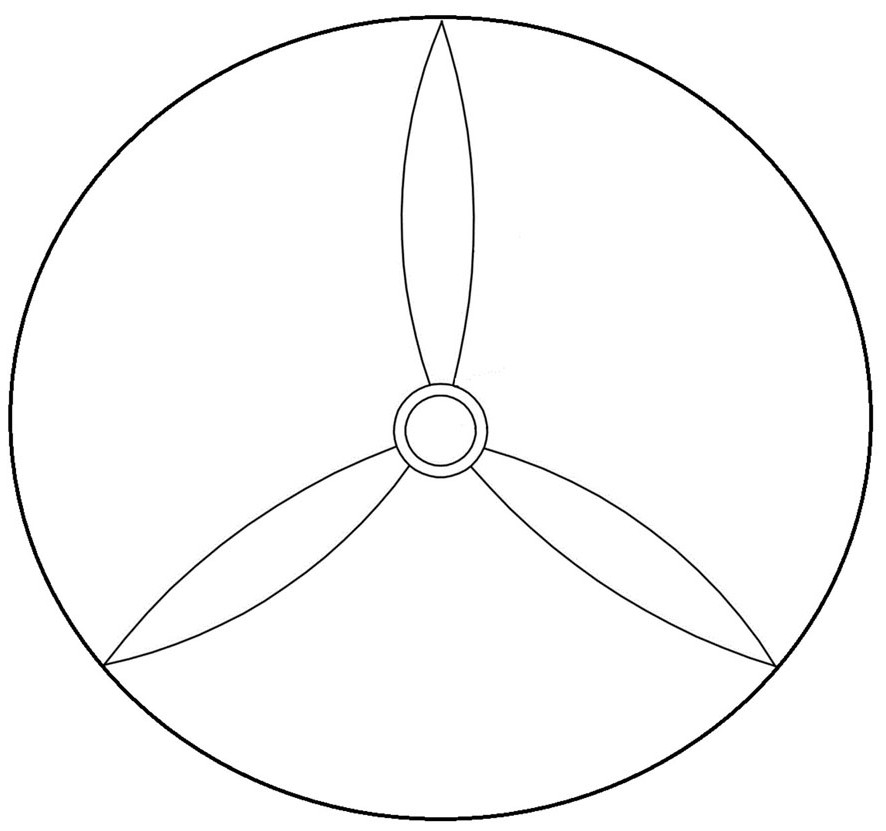Full-choked-flow breeze wind turbine technology
A technology of wind turbines and breeze, applied in the direction of wind turbines, wind turbines aligned with the wind direction, motors, etc., which can solve problems such as poor performance
- Summary
- Abstract
- Description
- Claims
- Application Information
AI Technical Summary
Problems solved by technology
Method used
Image
Examples
specific Embodiment 1
[0108] According to the design requirements, wind turbines can be divided into active wind turbines and passive wind turbines. The active facing wind turbine can use the motor to drive the impeller to actively find the wind direction to face the wind. When encountering strong wind, it can also yaw the impeller to resist strong wind. Passive wind turbines need to rely on wind force to adjust the direction of the impellers to face the wind. Specific embodiment 1 is a passive wind turbine.
[0109] Wind turbines can be divided into small wind turbines, medium wind turbines, large wind turbines, and ultra-large wind turbines according to the size of the impeller and power. The wind turbine described in Embodiment 1 is a small foldable wind turbine. The advantage of the small foldable wind turbine is that the structure of the impeller of the wind turbine is similar to that of a folding umbrella. The utility model has the advantages of simple structure, convenient assembly and di...
specific Embodiment 2
[0122] The specific embodiment 2 is an active wind-facing wind turbine, and the angle of the wind turbine is controlled by an electric motor to operate against the wind.
[0123] Specific embodiment 2 adopts the design that the diameter of the impeller is 8 meters, the width of the guide vane is 1.6 meters, the circumference of the impeller is 25 meters, and the area of the impeller is about 50 square meters.
[0124] according to Figure 5 It can be seen from the table that when the wind turbine impeller in the specific embodiment 2 has a wind speed of 3 meters per second (level 2 wind), the mass of the airflow passing through the impeller range per second is about 194 kg. When the wind speed reaches 10 meters per second (level 5 wind), the mass of air passing through the range of the impeller is about 647 kilograms per second. When the wind speed reaches 30 meters per second (level 11 wind), the mass of air passing through the range of the impeller is about 1942 kilograms...
PUM
 Login to View More
Login to View More Abstract
Description
Claims
Application Information
 Login to View More
Login to View More - R&D
- Intellectual Property
- Life Sciences
- Materials
- Tech Scout
- Unparalleled Data Quality
- Higher Quality Content
- 60% Fewer Hallucinations
Browse by: Latest US Patents, China's latest patents, Technical Efficacy Thesaurus, Application Domain, Technology Topic, Popular Technical Reports.
© 2025 PatSnap. All rights reserved.Legal|Privacy policy|Modern Slavery Act Transparency Statement|Sitemap|About US| Contact US: help@patsnap.com



